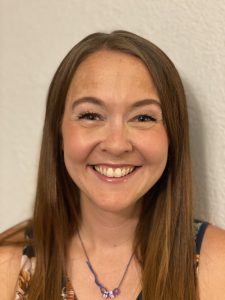Originally Published in the Greater Park Hill News – Oct 31st, 2021
White Supremacy Is Not A Shark; It Is The Water
By Erin Pier
For the GPHN

My husband and I have been on a 90’s movie kick lately. Recently, after tucking the kids in bed, we decided it would be fun to rewatch Independence Day for the first time in 20 years. While Will Smith certainly steals the show, it was hard not to notice that everyone else cast with any decision-making authority at all was overwhelmingly white. As I dug a little deeper, I was (not-at-all) surprised to find out that Smith almost didn’t make the cut himself. Executives at 21st Century Fox argued that having a Black man in that role would “kill the foreign box office.”
We live in a society where those who have the capital make the decisions on how (and in whom) to invest it. While America was being stolen from Indigenous nations and built on the backs of slave labor, colonizers were busy establishing what constitutes assets — and then writing laws to limit access. Land became collateral, something Black Americans wouldn’t be legally allowed to own for hundreds of years, allowing only colonizers to establish wealth. In the American system of capitalism, wealth allows those who possess it to dominate the narrative. Even today, the vast majority of these owners of capital are white.
Woven into the fabric
“By ‘white supremacy’ I do not mean to allude only to the self-conscious racism of white supremacist hate groups. I refer instead to a political, economic and cultural system in which whites overwhelmingly control power and material resources, conscious and unconscious ideas of white superiority and entitlement are widespread, and relations of white dominance and non-white subordination are daily reenacted across a broad array of institutions and social settings.” — Frances Lee Ansley
Up until very recently, I truly believed that white supremacy was a term reserved for hateful, openly racist, neo-Nazis. Because I benefited from it, it was harder to see that it was something in which I, too, was complicit; that it is woven into the fabric of our nation.
White supremacy fuels violence and hatred, yes, but it also sets dress codes, diet culture, and standards for professionalism. White supremacy is confederate flags and dangerous rhetoric, yes, but it’s also immigration laws, redlining, and who authors the history books. It is extremism and fascism, yes, but it’s also executives with power and money deciding whether casting a Black man in a blockbuster will cost them their profits. According to the activist and poet, Guante, “White supremacy is not a shark; it is the water.”
White comfort
Recently, I was talking with one of my dear friends, a woman of color, about the need white people have for comfort. She described how her personal experience with racism and white supremacy is “too much” for many white people to hear — it makes them uncomfortable and they turn away.
But when I, a white woman, address the same topics, white people are more apt to remain engaged.
My friend likened it to being on the scene of an accident; she is the victim of the trauma, and her voice is filled with pain. I am a bystander, a reporter. I can talk about the violence, without being directly involved. My voice, for many, is more comfortable to hear.
White people in this country are largely protected from racial stress. We benefit from the system as it is, and often, it is incredibly uncomfortable to discover that where we benefit, others are actively harmed. Learning of the privileges white skin affords us can bring out disbelief and defensiveness, and a desire to tune it all out.
But our desire for comfort can no longer prevail over the safety of our friends, neighbors, and community members of color. We have to be willing to set our comfort aside, to hear directly from the pained voices of the people impacted by white supremacy.
Decentering whiteness
For hundreds of years, white voices have dominated the American narrative. It is white people who have written the laws and the history books, who have defined standards of beauty and behavior, whose voices are deemed the most palatable. It is past time for this to change. And it can start right here.
For the past three years I have contributed columns on behalf of Park Hill Neighbors for Equity in Education. While I have loved this opportunity to both write and draw attention to the many inequities within education and our community, I also recognize that my voice continues to center a white perspective, and so I have decided to step back from writing this column. The editor of the Greater Park Hill News, Cara DeGette, recently shared her goal of including opportunities for more diverse authorship within the paper, and it is my sincere hope that releasing space within the paper will lend support to that cause. I also hope that Greater Park Hill Community, Inc. will consider its own role and power in either perpetuating or dismantling white supremacy in our diverse neighborhood.
Thank you for reading along these past three years. I am so grateful to have had this opportunity, and look forward to connecting with our community of readers in our monthly EdEquity Corner meetings.
Register to join us in November at tinyurl.com/edequitynov21. You can also find us on our blog at phnee.org/blog, or at facebook.com/phnee.
Erin Pier is a mother of three, a Stedman parent, and school psychologist at AUL Denver. She is a member of the Park Hill Neighbors For Equity In Education, which works toward diversity, equity, and inclusion in all schools in the neighborhood.
